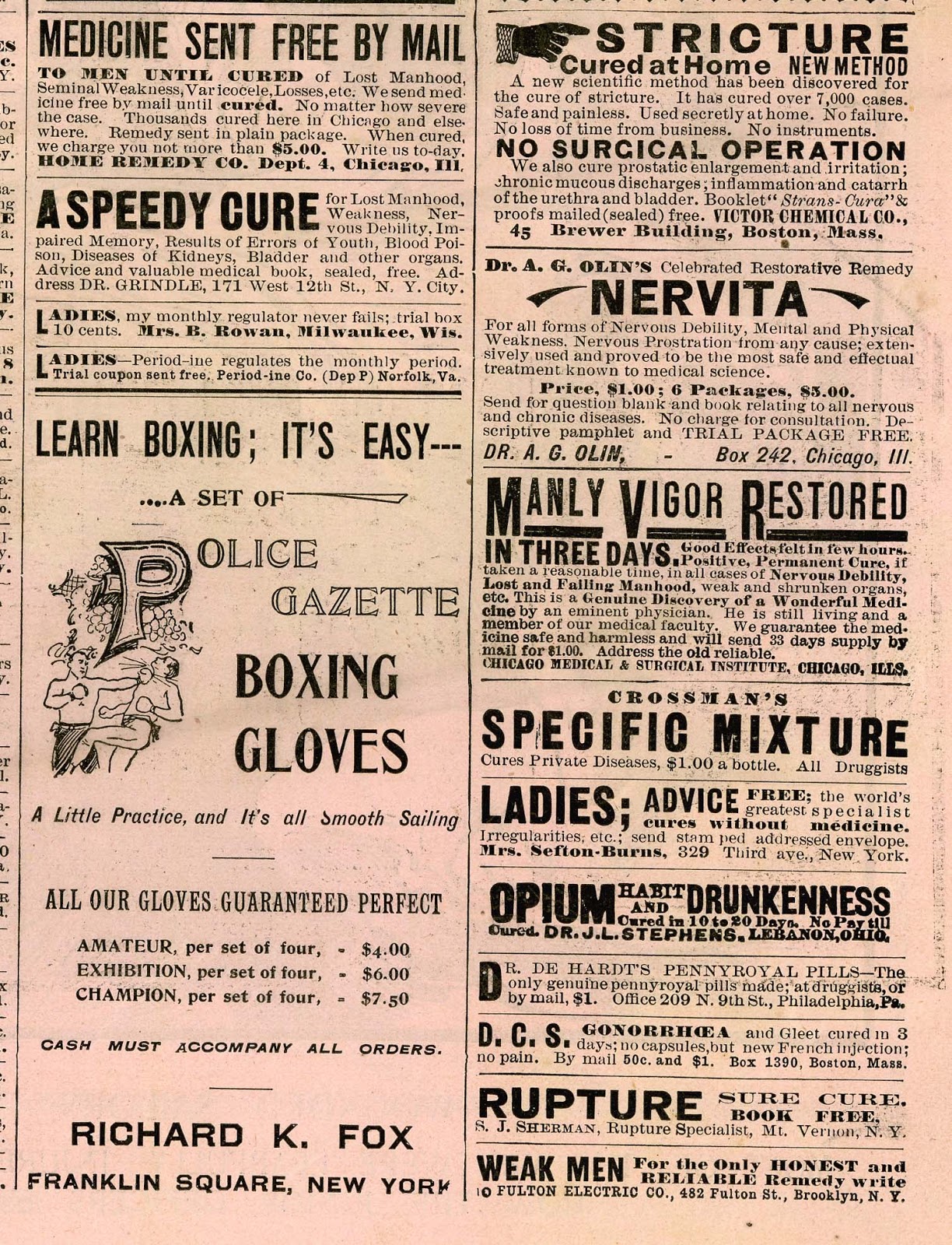 |
| [1] PFDA Commemorative Stamps. |
by E.M. Sanchez-Saavedra
Things are seldom what they seem;
Skim milk masquerades as cream;
Lard and soap we eat for cheese;
Butter is but axle-grease.
 |
| [2] Neuralgine Advertisement. |
 |
| [3] London Morning Post, May 16, 1777. |
 |
| [4] Holloway’s Ointment Pot. |
 |
| [5] Snake Oil Advertisement. |
 |
| [6] Cocaine Toothache Drops. |
 |
| [7] Dr. J. H. McLean’s Cordial. |
 |
| [8] Parker’s Tonic 1882. |
 |
| [9] Heroin Cough Sedative. |
 |
| [10] FitzHugh Ludlow. |
 |
| [11] Vanity Fair 1862. |
 |
| [12] The Day’s Doings, April 23, 1870. |
 |
| [13] The Day’s Doings, August 17, 1870. |
 |
| [14] The Day’s Doings, April 23, 1870. |
 |
| [15] The Day’s Doings, April 23, 1870. |
— Otto L. Bettman, ‘The Good Old Days – They Were Terrible’ (New York: Random House, 1974).
— Barbara Hodgson, ‘Opium; A Portrait of the Heavenly Demon’ (San Francisco: Chronicle Books, 1999).
— Barbara Hodgson, ‘In The Arms of Morpheus; The Tragic History of Laudanum, Morphine and Patent Medicines’ (Buffalo, NY: Firefly Books, 2001).
 |
| [16] Police Gazette, December 17, 1881. |
 |
| [17] Police Gazette, December 10, 1881. |
 |
| [18] Police Gazette, December 10, 1881. |
 |
| [19] Police Gazette, March 5, 1898. |
 |
| [20] Police Gazette, March 5, 1898. |
 |
| [21] Police Gazette, 1898. |
 |
| [22] Police Gazette, 1898. |
 |
| [23] Coca Cola Syrup. |
 |
| [24] J.G. Dill’s Best Cut Plug. |
 |
| [25] Allen & Ginter Old Planter. |
 |
| [26] Cocarettes Advertisement. |
 |
| [27] Bull Durham Label. |
 |
| [28] Vinous Rubber Grape Co. Advertisement. |
 |
| [29] Malt Whisky Advertisement. |












Great site! I am loving it!! Will be back later to read some more. I am taking your feeds also
ReplyDelete